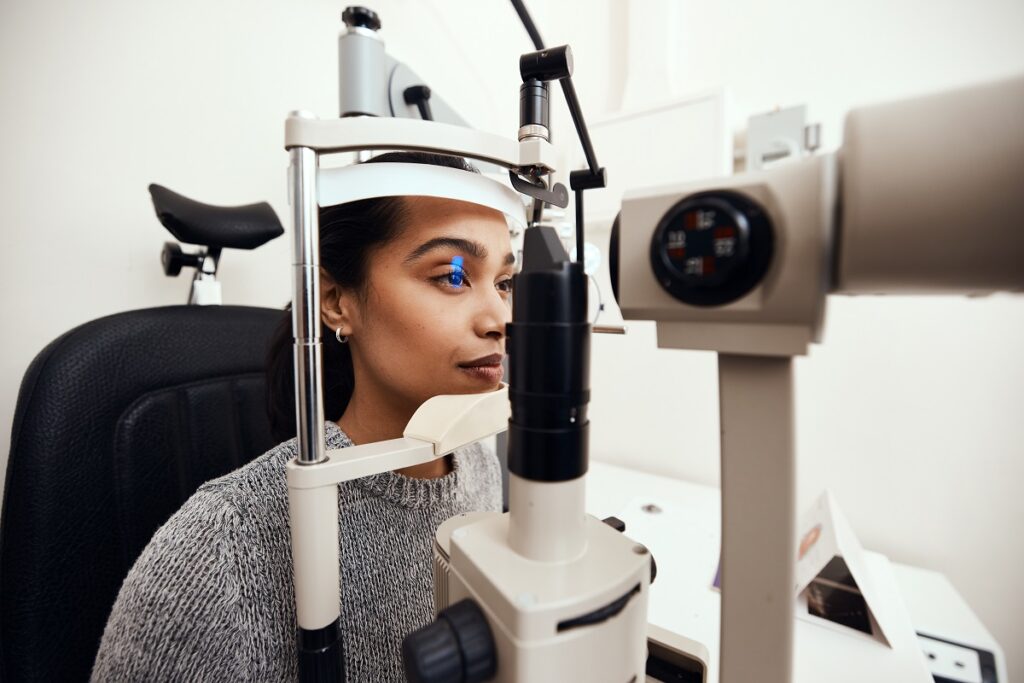Discovering the most recent Technological Innovations in Optometry and What They Mean for Optometrists
From the accuracy of Optical Coherence Tomography to the nuanced understandings used by AI-driven analysis devices, these innovations are establishing new standards in person assessment and therapy. As these developments penetrate the technique, eye doctors are encountered with the difficulty of welcoming these tools to improve individual outcomes.
Advancements in Diagnostic Equipment
Progressing the area of optometry, developments in analysis tools have reinvented the method eye care professionals analyze and identify aesthetic disabilities and ocular problems. The past decade has seen considerable technical improvements, making it possible for more comprehensive and precise examinations. Optical Coherence Tomography (OCT), as an example, provides high-resolution cross-sectional pictures of the retina, permitting the very early discovery of conditions such as glaucoma and age-related macular deterioration. This non-invasive imaging technique has actually become vital in contemporary optometric practice.
One more secret innovation is the intro of innovative corneal topography systems, which map the surface curvature of the cornea with accuracy. These devices are particularly helpful for suitable call lenses and detecting corneal conditions. Electronic retinal imaging has actually transformed standard ophthalmoscopy, offering comprehensive, breathtaking sights of the retina that promote detailed visual examinations.
The development of wavefront aberrometry has additionally been critical, making it possible for the analysis of refractive errors with unrivaled accuracy (Opticore Optometry). This innovation aids in personalizing rehabilitative lenses and boosting medical results for refractive surgeries. Collectively, these diagnostic advancements equip optometrists to supply remarkable client treatment, guaranteeing very early treatment and customized therapy approaches, eventually boosting visual health and wellness outcomes
AI in Individual Management
Structure on the structure of cutting-edge analysis devices, the unification of artificial intelligence (AI) in person administration stands for a transformative leap for optometry. AI systems are progressively utilized to enhance efficiency, accuracy, and personalization in person treatment.
Moreover, AI-driven platforms assist in structured person interactions and administrative procedures. Automated scheduling, digital examinations, and individualized follow-up plans not only enhance person complete satisfaction however additionally enhance time monitoring for professionals. These systems can triage patients based upon the urgency of their problems, ensuring that those in essential demand receive punctual focus.
Furthermore, AI improves decision-making by offering optometrists with evidence-based suggestions and treatment pathways. By integrating information from electronic health and wellness documents, AI devices provide insights that inform scientific choices, minimizing the risk of errors and improving patient end results. As AI continues to develop, its duty in client management will likely expand, improving the landscape of optometric treatment.
Advancements in Retinal Imaging
In the world of optometry, retinal imaging has actually observed remarkable technical developments that are enhancing analysis capacities and patient care. Innovations such as Optical Coherence Tomography (OCT) and fundus photography have changed how optometrists evaluate the retina and picture.
Enhanced imaging modalities like OCT angiography are further refining analysis precision. This non-invasive method maps blood flow in the retina, supplying essential understandings right into vascular wellness without the requirement for dye injections. Furthermore, adaptive optics modern technology is being integrated right into retinal imaging systems to deal with eye aberrations, supplying unprecedented picture clearness. Such innovations assist in the recognition of min retinal adjustments that might signify illness development.
Furthermore, improvements in man-made knowledge are enhancing retinal imaging by making it possible for automated analysis of large datasets. These systems assist optometrists in determining patterns a sign of pathology, thus improving diagnostic accuracy and performance. Collectively, these advancements are changing retinal imaging into a cornerstone of contemporary eye care, enhancing end results and expanding restorative opportunities.
Teleoptometry's Expanding Function
Teleoptometry is significantly coming to be a crucial component of eye care, driven by improvements in digital interaction and diagnostic tools. This is especially helpful in underserved and rural locations where accessibility to specialized eye care is usually restricted.
The combination of synthetic knowledge (AI) additional improves teleoptometry, allowing the evaluation of aesthetic information and aiding in the detection of ocular conditions such as glaucoma and diabetic retinopathy. AI-powered algorithms can rapidly interpret intricate imaging data, providing eye doctors with useful understandings that strengthen clinical decision-making.
Furthermore, teleoptometry supports connection of treatment through seamless combination with digital health and wellness records (EHRs), permitting eye doctors to maintain thorough individual histories. When consulting with different specialists., this makes certain that individuals obtain regular and personalized treatment also.
In spite of these benefits, difficulties remain, including making certain information protection and taking care of individual expectations. Nonetheless, teleoptometry represents a substantial stride in the direction of even more obtainable, effective, and patient-centered eye treatment. As technology advances, its function is positioned to expand even more.

Future Fads in Eye Care
A myriad of innovative fads is set to reshape the future of eye care, driven by technical developments and the advancing needs of individuals. One substantial fad is the assimilation of fabricated knowledge (AI) in diagnostics, which assures to enhance the accuracy and performance of eye examinations. AI formulas can analyze substantial amounts of data from retinal images, possibly spotting problems like diabetic person retinopathy and glaucoma earlier than traditional approaches.
Additionally, webpage customized medicine is getting traction in optometry, with hereditary screening educating tailored therapy strategies. This strategy intends to optimize person results by tailoring interventions to individual genetic accounts. Wearable modern technology, such as smart contact lenses, is also on the horizon, supplying real-time surveillance of intraocular pressure or glucose degrees, therefore giving constant insights into ocular and systemic health and wellness.
The adoption of increased truth (AR) and virtual reality (VIRTUAL REALITY) in training and individual education and learning is another emerging pattern. These technologies offer immersive experiences that can boost understanding and skills both for optometrists and clients. As these fads develop, optometrists need to remain abreast of technical improvements to supply advanced treatment, guaranteeing enhanced client results and fulfillment in the vibrant landscape of eye care.
Conclusion

Collectively, these Eye Doctor Optometrist diagnostic innovations encourage optometrists to provide premium client treatment, guaranteeing early treatment and customized therapy techniques, ultimately improving visual wellness results.

As these technologies continue to evolve, eye doctors should adapt and integrate them right into practice, inevitably maximizing workflow performance and boosting the criterion of eye treatment delivered to patients.